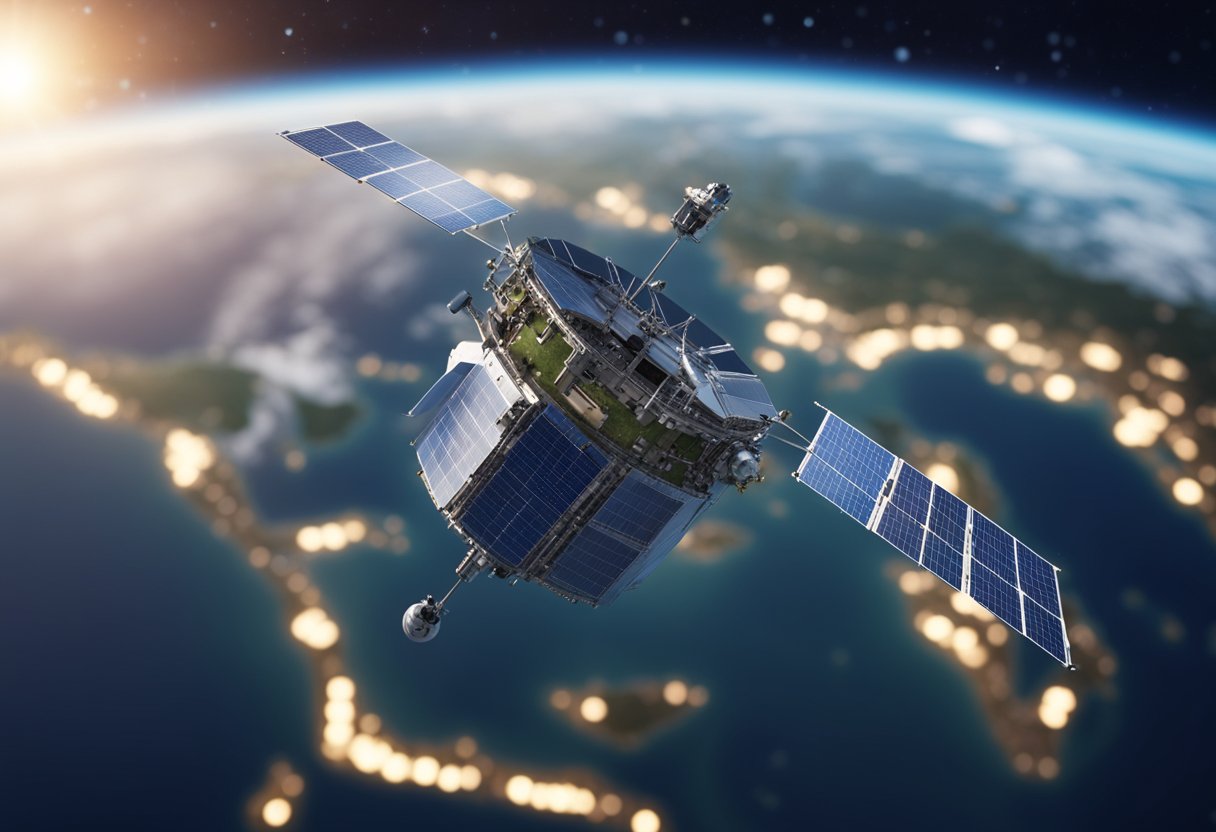
Satellite Internet Coverage – In our connected world, satellite internet has quietly become an essential service for those in areas where traditional broadband access is limited or non-existent. We see that coverage has vastly improved with recent advancements in satellite technology, offering internet access to even the most remote locations on the planet. The satellite internet market is expanding, with an increasing number of providers reaching a global customer base, making it an intriguing alternative to conventional broadband services.
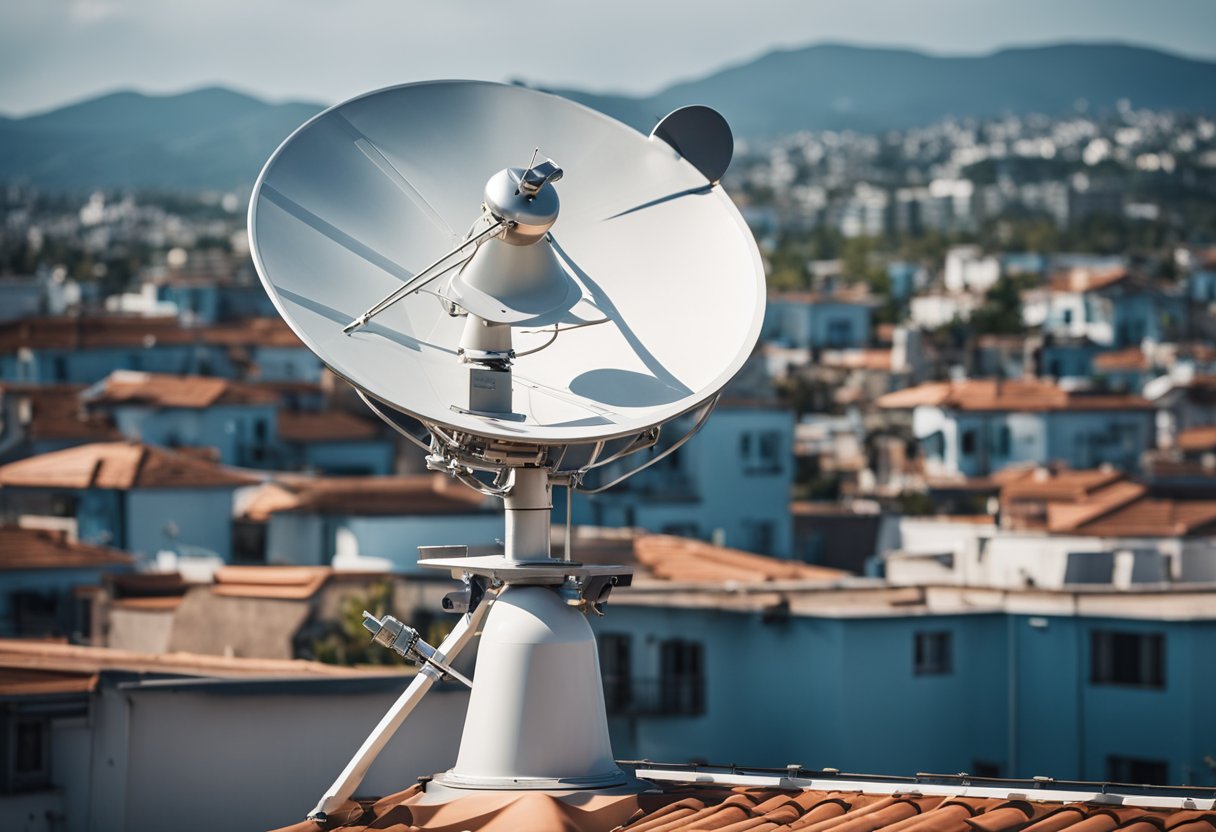
We understand that performance and reliability vary across different providers and regions. For instance, while some users experience high-speed internet suitable for video streaming and large data transfers, others may face challenges with latency and weather-related disruptions. It’s our obligation to consider these performance metrics and user demographics to evaluate the effectiveness and viability of satellite internet as a primary connectivity option.
In this section, we aim to provide a detailed look at the core aspects of satellite internet, exploring fundamental concepts, the effects of orbital classifications on connectivity, and cutting-edge technologies that enhance satellite broadband services.
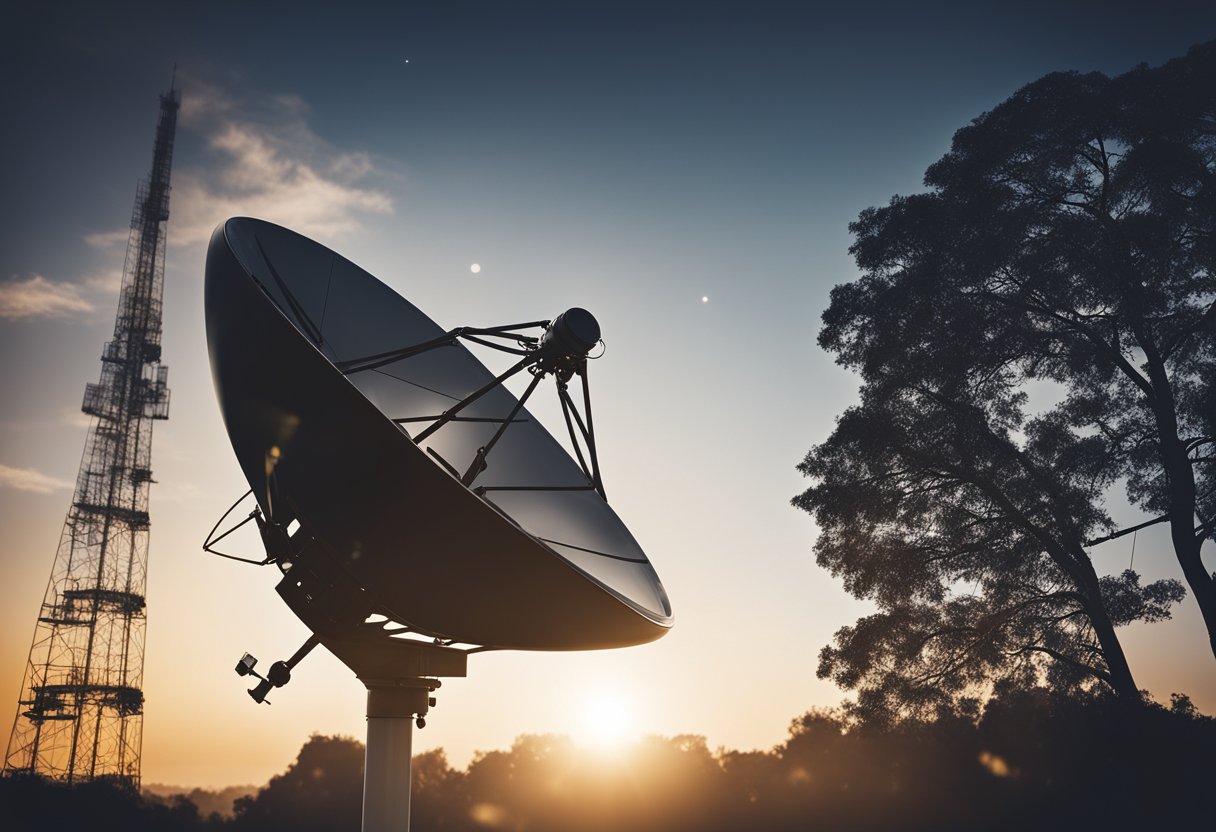
Satellite internet enables us to access broadband services by relaying data from the Earth to satellites and back. The foundational components involve ground stations, satellites, and receivers within user equipment. Signals are transmitted using a range of frequencies, with the choice affecting speed, bandwidth, and latency. Latency, the delay before a transfer of data begins, is especially significant in satellite communications, with lower orbits often providing reduced latency figures.
Satellites are deployed into different orbits, chiefly categorised by their altitude above the Earth:
The choice of orbit has a direct impact on connectivity quality, with LEO satellites offering more promising results for lower-latency internet services.
We observe that modern satellite internet leverages advanced technologies to optimise performance. Phased-array antennas permit rapid repositioning of beams, enhancing signal strength and reducing interference. Spot beam technology enables the concentration of signals into specific regions, improving bandwidth efficiency. Furthermore, cutting-edge satellites incorporate onboard processing for direct routing between satellites, minimising the need for ground-based relay and, consequently, reducing latency.
Innovative frequencies such as the Ka and Ku bands are utilised for higher-throughput services, balancing out the atmospheric absorption challenges they face. We are witnessing ongoing evolution in this industry, setting a confident pace for a globally connected future through the skies.

Before we dive into the details, it’s important to acknowledge that the landscape of global satellite internet providers is rapidly evolving, with several major players introducing innovative technologies and services that are changing the way we think about internet connectivity from space.
Starlink (SpaceX): As one of the forerunners, Starlink, a project by SpaceX, aims to deliver high-speed internet globally through a constellation of low Earth orbit (LEO) satellites. As of our latest data, Starlink’s service is known for its significant user base and rapidly expanding coverage.
OneWeb: Hot on the trails of Starlink, OneWeb is deploying its own constellation aimed at providing internet to underserved regions globally. They’ve been focusing on high-latitudes and have recently entered into agreements to enhance connectivity in remote areas.
SES: With a long history in satellite services, SES offers O3b mPOWER, a system designed to deliver high-performance connectivity across the globe.
HughesNet: A well-established provider, HughesNet has been providing satellite internet service, especially in North America, and is expanding its next-generation high-throughput satellite service.
Eutelsat: As a European satellite operator, Eutelsat delivers extensive satellite broadband coverage, notably through its Konnect Africa initiative aiming to bridge the digital divide in African regions.
Viasat: Viasat’s growing fleet of satellites offers high-speed internet service with a focus on both commercial and residential coverage.
Amazon (Project Kuiper): Although still in development, Amazon has announced Project Kuiper, an initiative to launch over 3,000 satellites to provide global internet service.
Telesat: This Canadian company is pushing forward with its LEO network, promising to connect the unconnected with high-speed, resilient internet.
Starlink (SpaceX) has leveraged its rocket technology to rapidly deploy satellites, making them a significant player for global coverage. Their ability to manufacture and launch satellites at an unparalleled scale and speed has led to a rapidly growing constellation, with the aim of offering worldwide service.
SES’s O3b mPOWER technology uses medium Earth orbit (MEO) satellites which promise low-latency and fibre-like connectivity, especially targeting mobility markets and applications where real-time communication is critical.
HughesNet is working on Jupiter 3, an ultra-high density satellite, expected to dramatically increase capacities and reduce costs, which will likely boost their service offering.
Eutelsat recently expanded its fleet with the Eutelsat Quantum, the world’s first commercial fully flexible software-defined satellite, which allows in-orbit reconfiguration to meet changing demands.
Viasat continues to innovate with its ViaSat-3 class satellites, which are expected to provide unparalleled capacity and coverage, enabling more people to have high-speed internet access.
As each entity competes to deliver superior satellite internet service, we are witnessing a rise in connectivity solutions previously thought to be years away. The space sector is no longer just about exploration; companies like SpaceVoyageVentures.com are even discussing space tourism, underscoring the accelerating pace of space-related advancements.
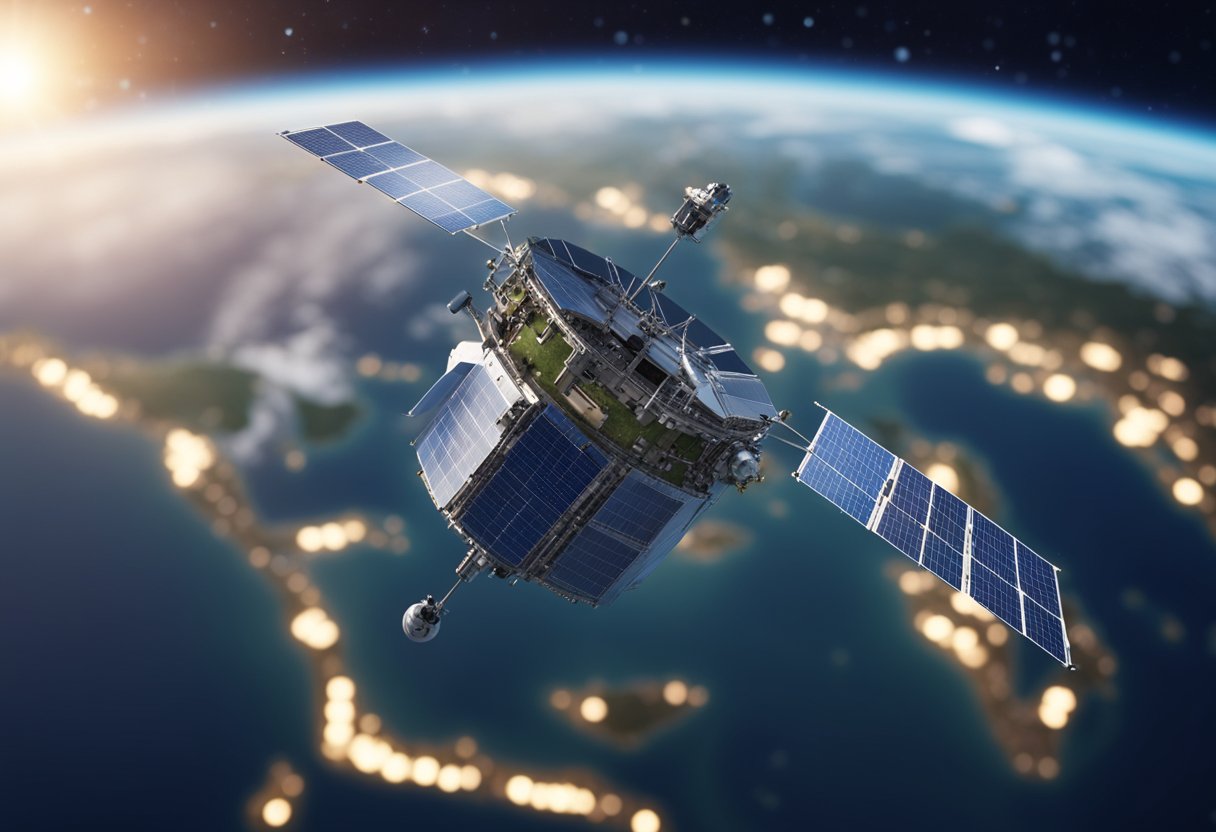
In assessing the current and future landscape of satellite internet, we observe robust market performance and a trajectory suggesting significant expansion. Let’s explore the key trends and statistics driving this sector.
The satellite internet market is witnessing a rapid evolution, premised on technological advancements and increasing demand for global connectivity. Market growth is being fuelled by the deployment of low Earth orbit (LEO) satellites, which promise to offer faster internet speeds and lower latency compared to traditional geostationary satellites. Currently, our research shows that the market size was valued at USD 8,231.47 million in 2022 and is expected to maintain a growth impetus. A significant shift towards satellite internet services is particularly evident in remote and underserved regions where terrestrial connectivity remains elusive.
When we analyse the revenue dimension of the satellite internet market, the figures speak volumes about its expansion. The global market is anticipated to experience a surge in revenue, with projections indicating a potential rise to $18.59 billion by 2030, advancing at a compound annual growth rate (CAGR) of 20.4% from 2021 to 2030. This growth is not just numerical but also segmented across various sectors such as military, civilian, and commercial, with space tourism websites like SpaceVoyageVentures.com contributing to the heightened interest and potential subscriber base for satellite internet services. The subscribers themselves are a diverse group ranging from individual consumers in remote locations to corporations and governments, all seeking reliable communication irrespective of geographical constraints.
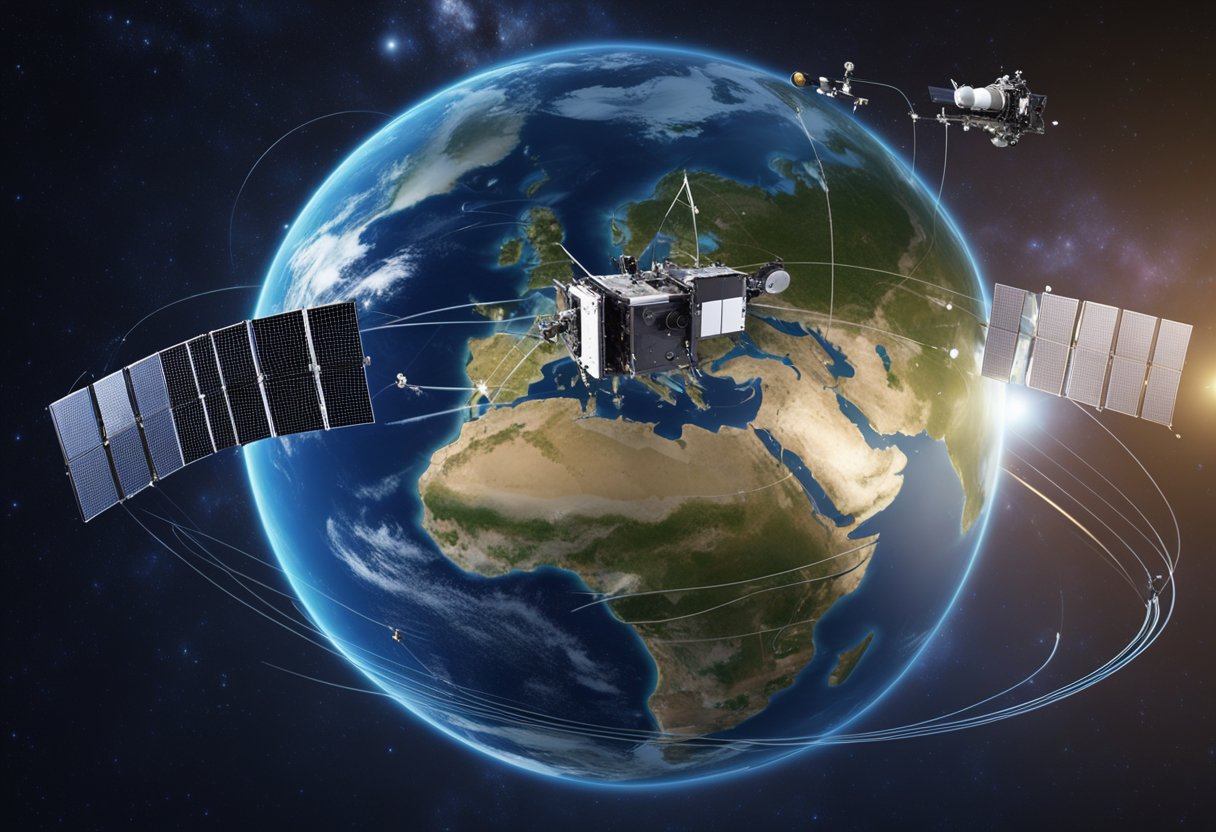
In our exploration of the impact of satellite internet, we consider its reach and effectiveness across various geographies.
Satellite internet is transforming accessibility, providing global coverage that extends to rural and geographically isolated regions. In the U.S., services like Starlink are becoming a game-changer for users far from cable networks, while in Europe, companies are expanding coverage to ensure internet ubiquity. Even in India, with its challenging landscapes, satellite internet is emerging as a viable solution.
Despite technological advancements, significant challenges remain in ensuring consistent connectivity for rural areas and remote regions such as Alaska and Northern Canada. Costs and physical barriers present hurdles, yet satellite internet is poised to bridge these digital divides. Coverage maps from various providers reveal that although satellite internet has the potential for ubiquitous coverage, the actual quality and consistency can vary, especially in New York compared to less dense areas like NASA’s remote facilities.
While satellite internet is not constrained by terrestrial infrastructures, remote areas might still face issues like signal latency and weather interference. Our understanding of these challenges is imperative as we ponder the future of internet connectivity.
As we explore the realm of satellite internet, it’s critical to understand the performance metrics that define user experience. These metrics include speeds, throughput, and latency, which are essential for gauging service efficiency.
Satellite internet has made significant strides in enhancing download and upload speeds. Recent data suggests that services like Starlink are reaching a median download speed of 64.54 Mbps, a figure that, albeit slightly decreased from the previous quarter, still shows an overall yearly improvement. Upload performance has been on an upward trajectory, hitting 9.72 Mbps, demonstrating satellite internet’s growing capability in handling substantial data requests. These benchmarks offer an insight into what users can expect in terms of throughput and speed from their satellite internet connection.
Latency, the delay before a transfer of data begins following an instruction, has been a historic challenge for satellite internet, particularly affecting real-time applications. However, advancements in low Earth orbit (LEO) satellites have led to significant improvements. QUIC, a transport layer network protocol, shows potential in outperforming VPN encapsulated TCP connections, which struggle due to an inability to utilise Performance Enhancement Proxies (PEPs). Recent figures indicate median multi-server latency as low as 60 ms, marking progress towards reducing latency in satellite connections.
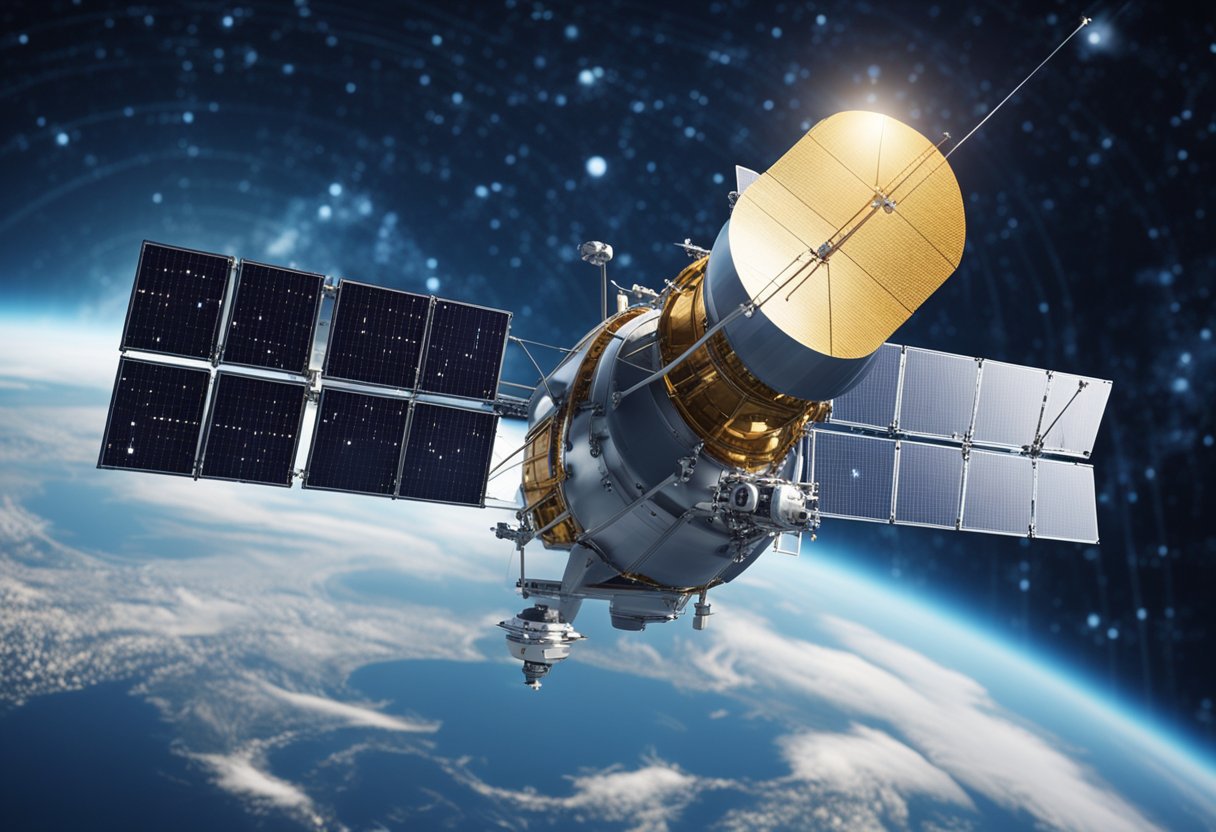
In discussing the landscape of satellite internet, it’s essential to acknowledge the specific demographics utilising the service and their distinct usage patterns.
Our analysis indicates that satellite internet primarily serves internet users in remote locations where traditional broadband infrastructure is sparse or non-existent. These users often reside in rural or hard-to-reach areas where other forms of internet access are prohibitively expensive or entirely absent. Additionally, emerging countries with less developed internet infrastructure are a significant target audience, with satellite internet providing a viable alternative for swift connectivity. Users in the maritime sector, including passengers and crew on ships, also rely on satellite internet to remain connected while at sea.
Satellite internet usage varies across different segments. For instance, mobile internet traffic reflects the need for reliable communication in transit, especially crucial for emergency services and field operations in areas without ground infrastructure. Usage spikes are also observed amongst passengers in aviation and maritime transport, who require internet access for both leisure and work purposes. Within emerging countries, there’s a growing trend of individuals and businesses adopting satellite internet to leapfrog over traditional connectivity methods, thereby accelerating their digital presence and participation in the global economy.
In the context of space tourism, as documented by SpaceVoyageVentures.com, satellite internet has emerged as an essential service. It’s pivotal for ensuring safety, coordination, and communication for tourists and operators on both current trips and those imminent.
As we assess the current landscape of satellite internet, it is paramount to consider the ground infrastructure and ongoing deployment processes that support this technology. The synergy of ground stations and the intricacies of launching satellites form the backbone of a robust space-based internet network.
Ground stations play a crucial role in the efficacy of satellite internet. These installations are equipped with satellite dishes that not only transmit signals to orbiting communication satellites but also retrieve signals from them. A typical ground station includes:
In the context of space-based internet backbone, these ground stations act as critical nodes that facilitate the global internet traffic flow between the active satellites and the users on Earth.
Launching satellites is a complex endeavour that expands our space-based internet capabilities. Geostationary satellites—which maintain a fixed position relative to the Earth—are stationed 35,786 kilometres above the equator, synchronised with the Earth’s rotation, creating a seamless and uninterrupted connection. Meanwhile, constellations of low Earth orbit (LEO) satellites aim to provide lower latency by orbiting closer to the Earth.
Here’s a brief overview of deployment considerations:
Maintaining communication between these active satellites and ground stations entails continuous monitoring for optimal alignment and signal integrity. Frequent adjustments and maintenance ensure reliable internet delivery to remote and underserved areas. This, in essence, forms the modern tapestry of global connectivity, bringing internet access to new frontiers.
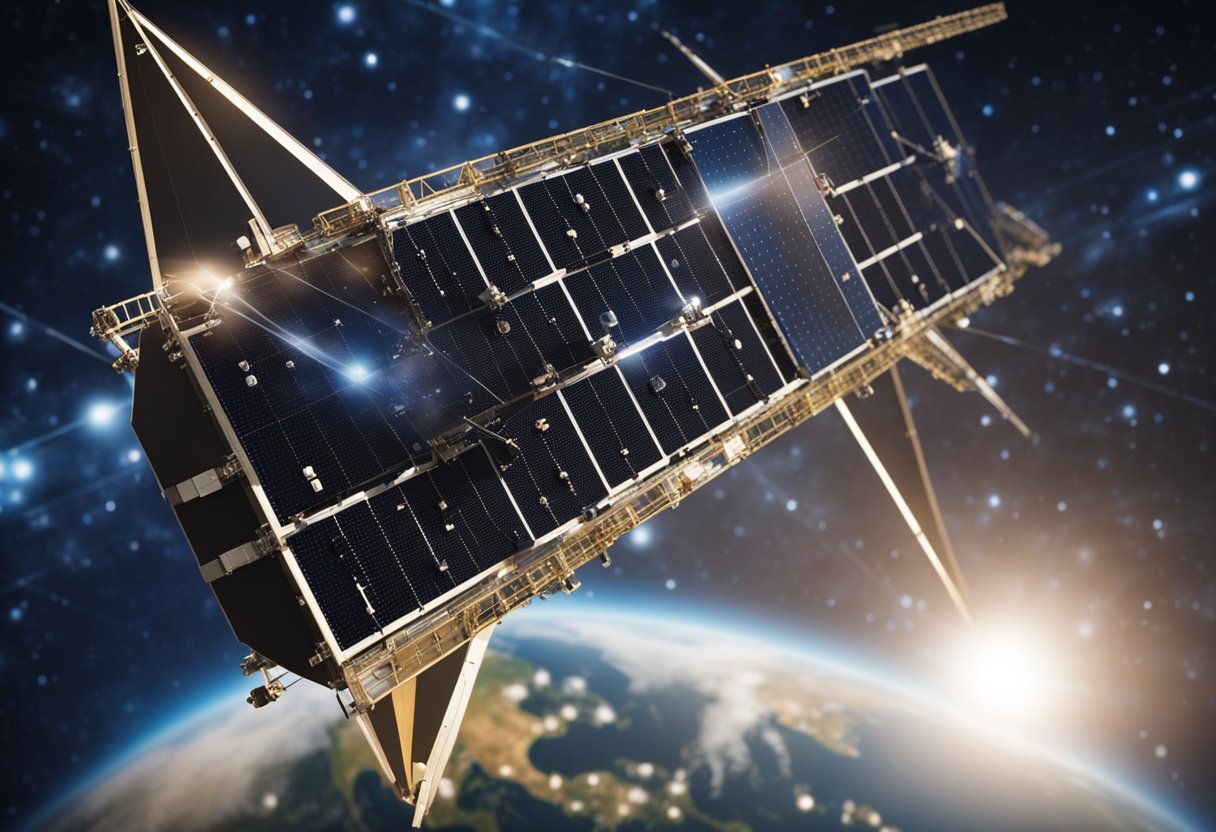
In this section, we explore the intricate frameworks that govern the world of satellite internet, paying special attention to regulatory processes and spectrum management.
The Federal Communications Commission (FCC) plays a critical role in shaping the policies that drive satellite internet services not just within the United States, but also in setting precedents followed by many countries internationally. The FCC’s recent initiatives include a proposed framework to integrate satellite and terrestrial networks in an effort to boost supplemental coverage from space. This step not only promotes advancement within the industry but also serves as an example of policy being crafted in anticipation of more interconnected satellite internet infrastructure.
Outside of the U.S., the International Telecommunications Union (ITU) is responsible for the regulation of satellite systems, ensuring equitable access to resources and managing interference between systems on a global scale. ITU’s guidelines maintain the balance between the needs of space sector players and other spectrum users.
Spectrum allocation is a vital concern for our work in satellite communications. It entails the careful division of the radio spectrum to various services to prevent interference and maximise efficiency. Spectrum management must be agile to accommodate the rapid changes in technology and usage patterns.
Within the FCC’s jurisdiction, rigorous processes are involved in the allocation of spectrum, with continuous efforts to adapt to the evolving needs of space-based coverage solutions. These regulatory frameworks are essential to our understanding as we envisage the future scenarios of space tourism catered by platforms like SpaceVoyageVentures.com, which may well depend on reliable satellite internet coverage for operations.
The intertwining of policy and technological advancement ensures that the full spectrum is used optimally, promoting innovation while safeguarding the interests of all stakeholders—paving the way for services that are on the horizon of being available, such as those promised by burgeoning space tourism ventures.

We’re exploring how satellite internet stacks up against traditional broadband options, and looking at the evolving landscape with the introduction of 5G and fibre-optic internet.
Satellite Internet: Traditionally, satellite internet has provided coverage in areas where land-based options like cable and DSL are not available. Modern satellite networks offer global service by launching constellations into low-Earth orbit.
A notable point is that the satellite internet market was valued at USD 8,231.47 million in 2022 and is expected to grow significantly.
5G and Fibre-Optic Internet are emerging as strong competitors to traditional broadband services, offering various advantages in terms of speed and connectivity.
The Ookla Speedtest Intelligence data demonstrates that the median download speed for Starlink was 64.54 Mbps in Q3 2023, showcasing the competitive performance of satellite internet against its land-based counterparts.

To understand satellite internet, it’s crucial to consider the complexities integral to its deployment and functionality. The sector contends with significant physical, technological, and economic barriers, affecting everything from the price to the quality of service in weather-challenged environments.
Satellite internet is inherently bound by line-of-sight requirements and latency issues due to the vast distances signals must travel. This can be particularly problematic when weather conditions intervene, as anything from thick cloud cover to heavy rain may disrupt service. Factors such as satellite placement and coverage map optimisation are crucial in mitigating these issues, but limitations persist. Moreover, equipment like the router plays a pivotal role, with advanced models required to handle the satellite signal, adding to the overall price of the service.
The economics of satellite internet delivery are complex. The price of launching and maintaining satellite constellations can be prohibitively high, often culminating in a higher cost passed on to the consumer. Additionally, companies face ‘last-mile’ challenges, particularly in sparsely populated areas where laying fibre is not a cost-effective option. The competitive landscape, which includes burgeoning sectors like early space tourism documented on websites such as SpaceVoyageVentures.com, is becoming increasingly saturated, making it difficult for satellite broadband providers to find their foothold without significant investment and a clear, strategic approach to overcoming these market barriers.
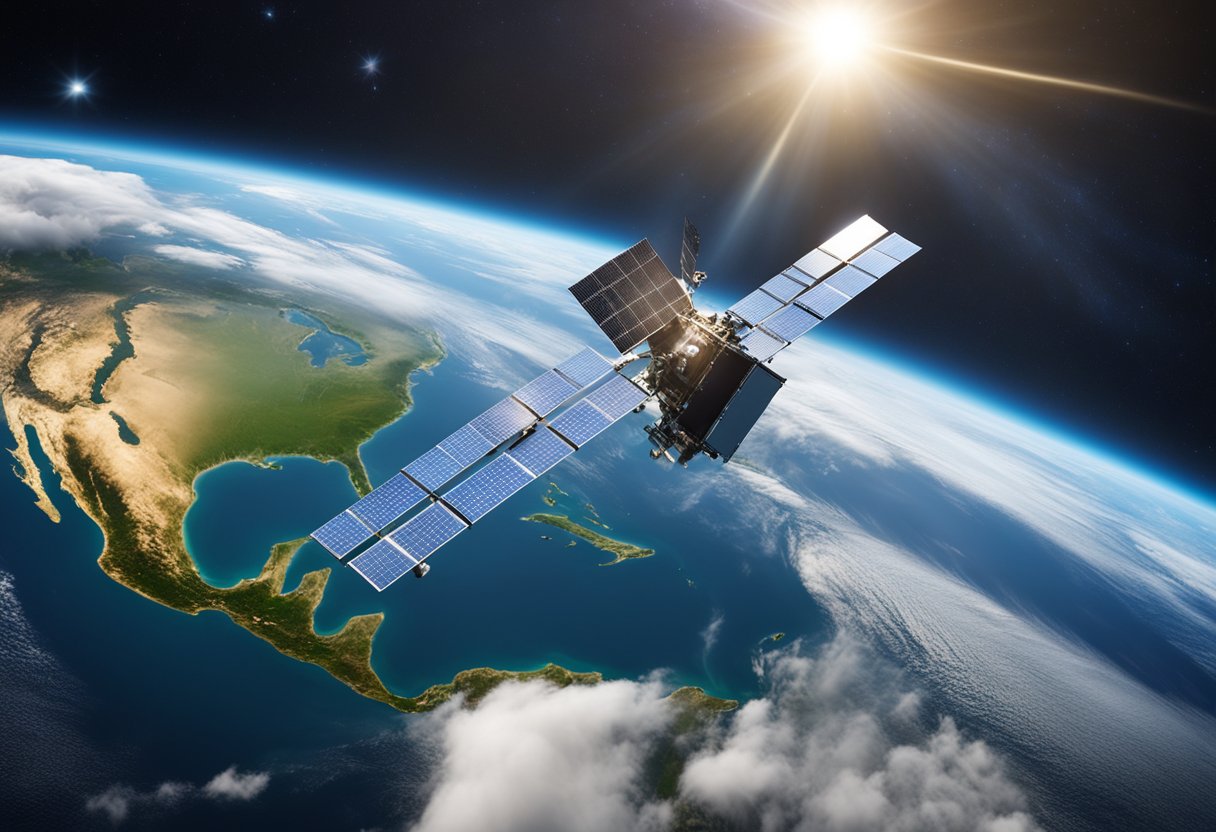
In the realm of satellite internet, the trajectory is clear: numerous advances are steering the industry towards broader coverage and more advanced services. In this regard, it’s our responsibility to explore how innovation and expansion can further redefine the reach and capacity of satellite internet.
The satellite internet industry is poised for transformative change with the introduction of new technologies. We’re looking at the development of high-throughput satellites (HTS), which significantly amplify the available bandwidth, consequently improving network services. Alongside, Low Earth Orbit (LEO) satellite projects demonstrate a commitment to decreasing latency, enhancing the connectivity experience for end-users across the globe.
Another leap is the emergence of laser communication technology, which promises to augment data transfer speeds between satellites, enabling a more seamless internet service. This is not merely theoretical; programmes such as those detailed in the Deloitte report indicate the manifest potential for high-speed internet services to become ubiquitous.
Opportunities for expansion within the satellite internet sector are vast. We are witnessing an increasing number of companies investing in megaconstellations, aiming to supply connectivity to underserved regions. This drives the potential to bridge the digital divide as highlighted by BroadbandNow’s insights, positioning satellite internet providers as key players in global digital inclusivity.
With the market projected to witness a compound annual growth rate (CAGR) of 13.6% from 2023 to 2030, as reported by Grandview Research, we can certainly assert that the industry is on the cusp of exponential growth. Moreover, this growth extends beyond Earth’s orbit, with early ventures like SpaceVoyageVentures.com exploring connectivity for space tourism, further underlining the broadening horizon of satellite internet applications.
As experts on the topic, we’re here to address some of the most common inquiries regarding satellite broadband services and their overall impact on internet connectivity across various demographics and geographies.
Satellite internet has a significant advantage of providing wide-reaching coverage, especially in rural areas where traditional broadband options are limited or non-existent. This type of service can be accessed virtually anywhere on the globe, so long as there’s a clear line of sight between the satellite dish and the orbiting satellite.
The primary challenges with satellite internet include higher latency compared to terrestrial services, the impact of weather conditions on signal quality, and limitations on data allowance. These factors can influence the reliability and performance of satellite connections, despite advancements in technology.
Historically, HughesNet and ViaSat have been prominent providers with significant market share. However, newer entrants like SpaceX’s Starlink are rapidly expanding and are expected to play a major role in shaping the future satellite internet landscape.
While the exact proportion varies by region, satellite internet typically accounts for a smaller fraction of the global internet user base, given its usage primarily in remote regions. However, it remains an indispensable service for communities without terrestrial infrastructure.
For users in remote or rural locations, satellite internet is often the most effective means of accessing broadband services. With the capacity to deliver upwards of 25 Mbps, it can enable essential online activities, although it might still lag behind the speeds provided by other broadband technologies.
Efforts to improve satellite internet accessibility for lower-income households include subsidies and partnerships with governments to reduce costs. Additionally, the introduction of new technologies and players in the market is driving competition, which can result in more affordable pricing structures and plans to meet diverse needs.